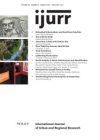Since the 1970s, centralized interventions into the infrastructural affairs of US cities have been in decline. As a result, local entities have been compelled to shoulder a greater share of the burden for developing the urban infrastructure networks and public works needed to support growth. Under conditions of neoliberalism, local officials and growth‐machine participants have pursued this local infrastructural imperative by means of increasingly speculative and risky financing strategies deployed through the ‘back door’ of traditional democratic channels. The following analysis is empirically focused on three Californian cities — Emeryville, Oxnard and Vallejo — which achieved impressive levels of growth around the turn of the twenty‐first century. However, these cities subsequently suffered precipitous economic contraction. As such, they demonstrate the unprecedented challenges now facing the urban growth machine in the wake of the current global economic crisis. Two emergent challenges, in particular, appear poised to challenge the historical resiliency of the growth machine: the ‘reverse infrastructural trap’ and nascent conflicts between municipal bondholders and municipal employees. The cases presented here thus raise important questions about the continued viability of the pro‐growth agenda in the context of structural fiscal deficits, chronic infrastructural decline and extreme capital‐market volatility.
Details
Written by:
L. OWEN KIRKPATRICK, MICHAEL PETER SMITH
Digital Object Identifier (DOI)
10.1111/j.1468-2427.2011.01058.x
About DOI
Read full article as PDF
Read full article as HTML
See the references for this article
